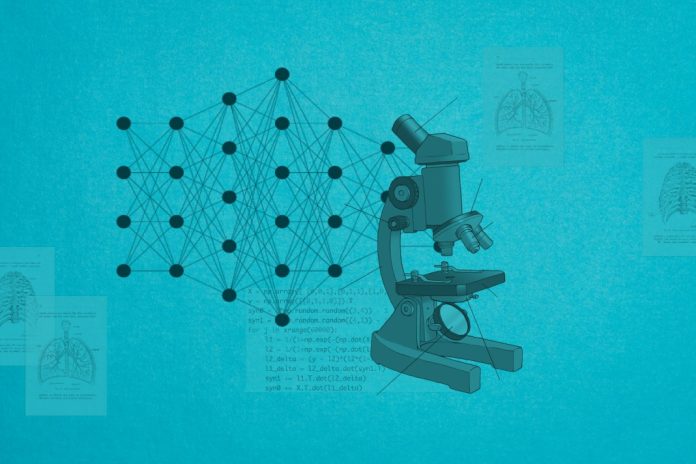For decades, the story of drug discovery has been one of painstaking, manual work—a scientist in a lab coat, screening thousands of compounds—a process defined by patience, precision, and an overwhelmingly high probability of failure. Meanwhile, in the humming data centres of Silicon Valley, a different kind of experiment is underway.
Artificial intelligence is sifting through not thousands, but billions of biological possibilities in hours, designing novel proteins that have never existed in nature. In a cascade of landmark announcements, AI behemoths like Anthropic and OpenAI have revealed unprecedented collaborations with national laboratories, aiming their powerful models directly at the heart of humanity’s most complex scientific challenges.
This isn’t just about giving scientists a new, faster tool. It represents the blueprint for an entirely new factory floor for medicine, a fundamental rewiring of the business of biology itself. This is the beginning of an industrial revolution, and to understand its profound potential, you first have to understand the brutal economic law it aims to break.
The End of Eroom’s Law?
While the tech industry has long been propelled by Moore’s Law—the famous observation that computing power doubles roughly every two years for the same cost—the pharmaceutical industry has been haunted by its grim, inverted reflection: Eroom’s Law.
Spelled backwards, it’s no coincidence. Coined in a 2012 paper in Nature Reviews Drug Discovery, Eroom’s Law describes the bleak reality that the cost of developing a new drug has been doubling approximately every nine years, despite technological advances. It’s a multi-trillion-dollar paradox that has meant slower cures, astronomical R&D budgets, and a chronically slow pipeline of innovation.
The announcements from Anthropic, OpenAI, and their government partners represent a coordinated targeting on this biological inefficiency. The tech giants are betting they can finally repeal Eroom’s Law by transforming the art of drug discovery from a bespoke craft into a predictable, scalable, and data-driven science. And for the businesses that can adapt, it will change everything.
The New Factory Floor: From Wet Labs to In Silico Models
To appreciate the revolution, you must first understand the old regime. For half a century, the pharmaceutical R&D process has been a masterpiece of brute force. It starts in a “wet lab” with a process called high-throughput screening, which is a fancy way of saying scientists throw thousands, sometimes millions, of chemical compounds at a biological target (like a rogue protein) to see what sticks. It’s a numbers game defined by serendipity, educated guesses, and an astronomical amount of waste. Promising candidates then embark on a decade-long, multi-billion-dollar journey of trials and testing, with most failing along the way.
The new factory floor, powered by AI, flips this model on its head. Instead of randomly searching for a key that fits a biological lock, scientists are now using AI to design the perfect key from scratch, entirely on a computer. This is the world of in silico—in silicon—biology, where digital twins of biological systems can be tested, tweaked, and perfected millions of times before a single drop of chemical enters a test tube.
The first major tremor of this earthquake was Google DeepMind’s AlphaFold. In 2020, it effectively solved the 50-year-old grand challenge of protein folding—predicting a protein’s 3D shape from its amino acid sequence alone. This was the equivalent of being handed a complete blueprint for every component of a complex machine. But a blueprint doesn’t tell you what each part does or how it communicates with others.
This is where the new generation of large language models (LLMs) from Anthropic and OpenAI enters the picture. Trained on vast datasets of genomic and protein information, these models are learning the language of biology. They are beginning to predict a gene’s function simply by “reading” its DNA sequence, a feat that was previously the stuff of science fiction. This elevates the process from understanding the structure of the machine to understanding its operating manual.
And the industry has taken notice, unleashing a torrent of capital and collaboration:
- Google’s Isomorphic Labs, a spin-off from DeepMind, has signed deals worth a potential $3 billion with pharma giants Eli Lilly (US) and Novartis (Swiss), acting as an external AI engine to power their internal drug discovery programmes.
- French titan Sanofi is investing heavily, striking a partnership with AI-native BioMap to build advanced biological models, and another with UK-based Exscientia, a pioneer that already has multiple fully AI-designed drug candidates in human clinical trials. Sanofi is even working with OpenAI directly to leverage its data at scale.
- German powerhouse Bayer has entered a major partnership with US-based Recursion Pharmaceuticals, a company that pairs automated wet-lab experiments with AI to create a closed-loop discovery system.
- BioNTech, the German firm behind the revolutionary messenger RNA (mRNA) COVID-19 vaccine, acquired UK AI firm InstaDeep to create an “Early Warning System” that can predict high-risk SARS-CoV-2 variants before they even emerge.
Those enabling the technology are also seeing growth. NVIDIA’s BioNeMo platform has become a foundational “operating system” for this new industry, offering pre-trained models that companies can fine-tune for tasks like generating new molecules or understanding protein interactions.
The human genome contains over 3 billion base pairs. If you printed it out in standard font, the stack of paper would be as tall as a 60-story building. The number of potential protein structures is estimated to be greater than the number of atoms in the universe. It’s the ultimate big data problem.
This new in silico factory floor isn’t just a theoretical concept anymore. It’s a humming, globally distributed engine of innovation, actively being built and deployed by the biggest names in both tech and pharma. And it’s completely rewriting the financial calculus of creating new medicines.
The Business Case: A Paradigm Shift in ROI
The primary driver behind this tidal wave of investment isn’t scientific curiosity; it’s the promise of a seismic shift in the return on investment (ROI) for drug development. For pharmaceutical companies and their investors, the in silico factory floor isn’t just a new tool—it’s a complete reimagining of their business model, attacking the core inefficiencies that gave rise to Eroom’s Law.
The impact can be broken down into three key pillars:
- Radical Speed: The most immediate advantage is a dramatic acceleration of the preclinical phase. Instead of spending years physically screening compounds, AI models can design and validate millions of candidate molecules in weeks or even days. Boston-based startup Generate:Biomedicines, for instance, recently produced a novel antibody for an immune target in just a few months—a process that traditionally takes years. For a business where time-to-market is everything, this compression of discovery timelines from years to months is transformative. It means getting drugs to patients faster and starting the clock on patent-protected revenue sooner.
- Drastic Cost Reduction: The old pharma axiom is that you spend a billion dollars to find a failure. Most drug development costs are sunk into candidates that ultimately prove unviable late in the process. AI flips the script by “failing faster and cheaper” on a computer. By eliminating non-starters with high accuracy in the digital realm, companies avoid pouring hundreds of millions into doomed wet-lab experiments and clinical trials. According to a Morgan Stanley report, applying AI could translate to more than $50 billion in savings for the industry over a decade, simply by improving the success rates of early-stage drug discovery.
- Unprecedented Scope: Perhaps the most exciting frontier is AI’s ability to tackle previously “undruggable” diseases. Many conditions are caused by proteins whose complex or unstable structures make them impossible to target with traditional small-molecule drugs. AI, however, can design entirely new therapeutic modalities from scratch—like custom-built proteins or novel mRNA sequences—that can interact with these targets in ways previously unimaginable. This doesn’t just improve the existing market; it creates entirely new ones, opening up vast, untapped patient populations and revenue streams.
This isn’t an incremental improvement. It’s a phase change in the economics of creating medicine. The business case is no longer just about finding the next blockbuster drug, but about building a more efficient, predictable, and powerful engine for creating them.
The Emerging Ecosystem: Who Wins?
The rise of the new factory floor is forging a new corporate food chain, and the lines between tech, biotech, and pharma are blurring into three key groups, each with a distinct strategy.
- First are the Incumbents. Big Pharma giants like Eli Lilly, Novartis, and Sanofi are wielding their immense R&D budgets to become the world’s most sophisticated customers. They possess the proprietary biological data, clinical trial expertise, and global distribution networks that tech lacks. Their strategy is to partner with the best AI players, supercharging their pipelines and outsourcing R&D risk.
- Next are the Architects of the Revolution. This is the domain of Big Tech and the AI labs. NVIDIA is executing a masterful “picks and shovels” play, making its BioNeMo platform the indispensable hardware and software foundation. Google’s Isomorphic Labs is acting as a premier R&D-for-hire partner, while OpenAI and Anthropic aim to be the “AWS for biological discovery”—licensing their foundational “brain” via Application Programming Interfaces (APIs) to power a thousand different applications.
- Finally, there are the AI-Native Disruptors. Agile startups like the UK’s Exscientia and the US’s Recursion were built with AI at their core. They are rapidly developing their own drug candidates while also partnering with incumbents, making them both prime innovation engines and top acquisition targets.
This complex web of partnerships raises a critical, multi-billion-dollar question: Who owns a discovery made by an AI? The answer will define the economics of this new era.

